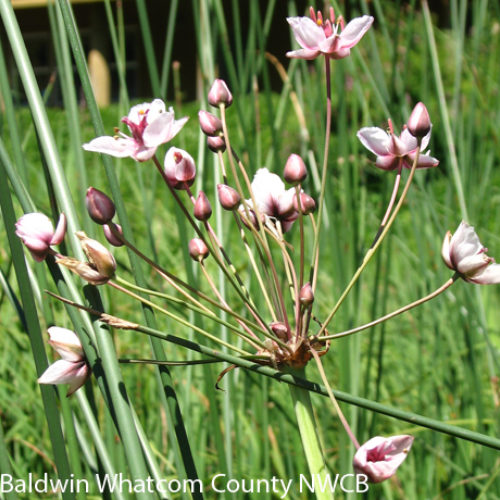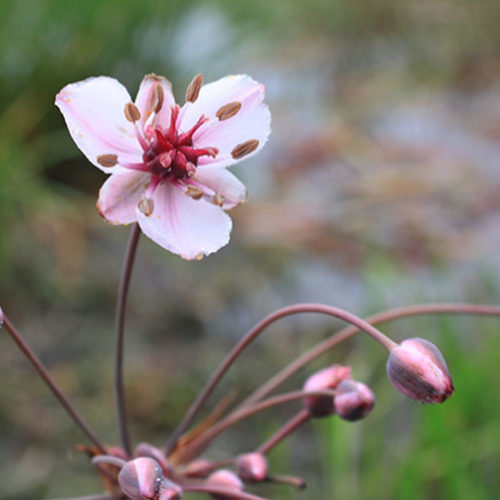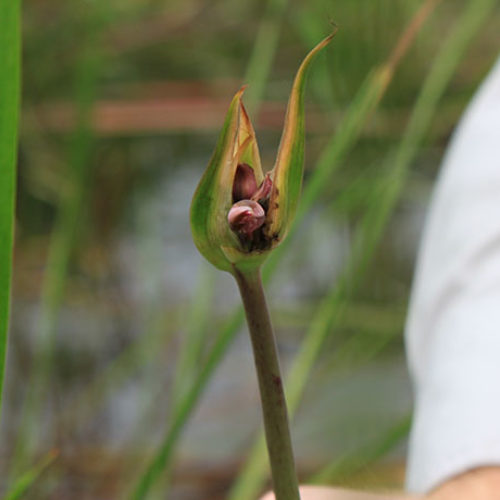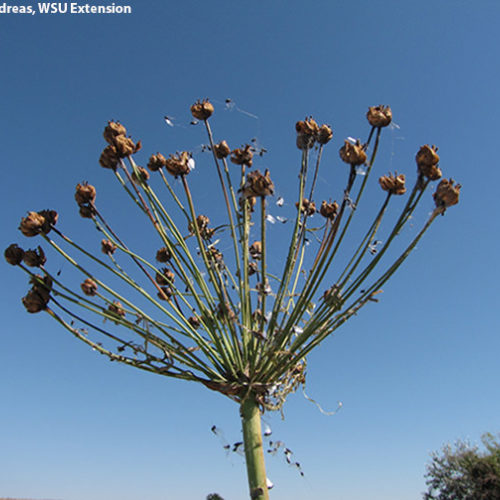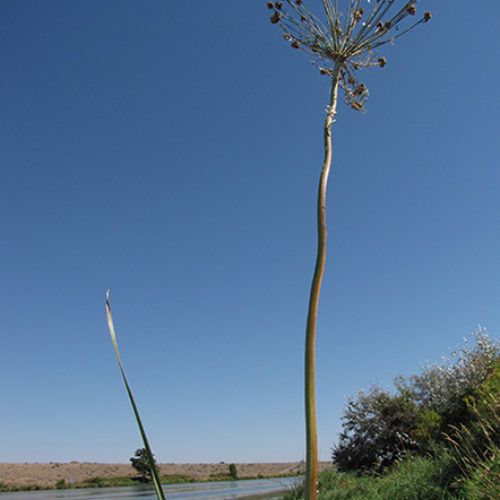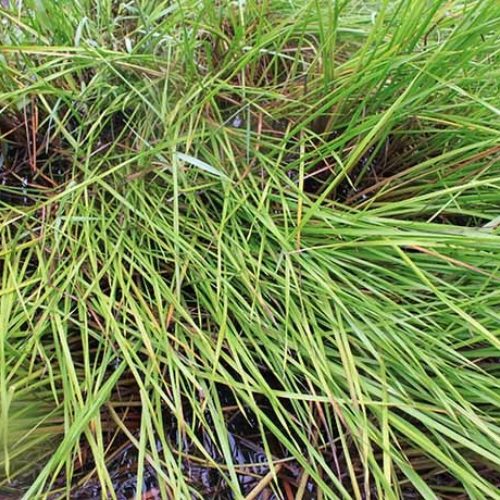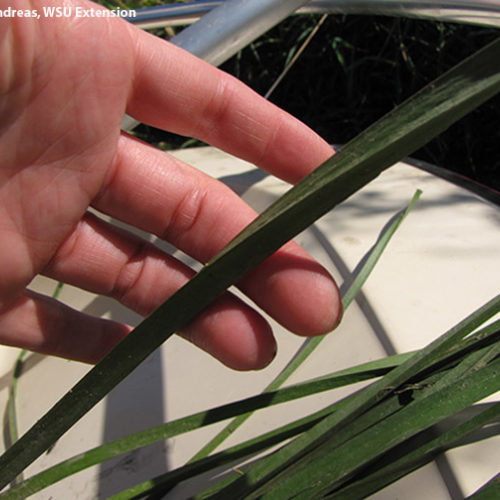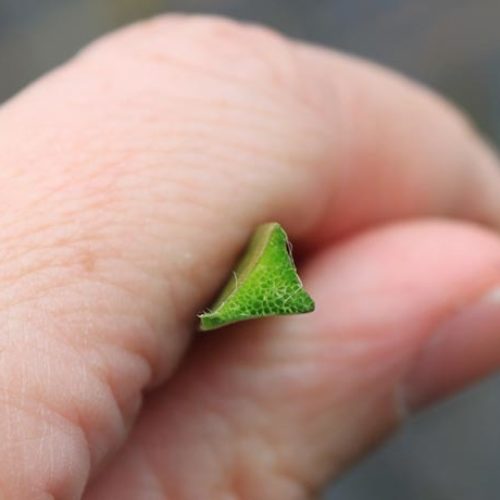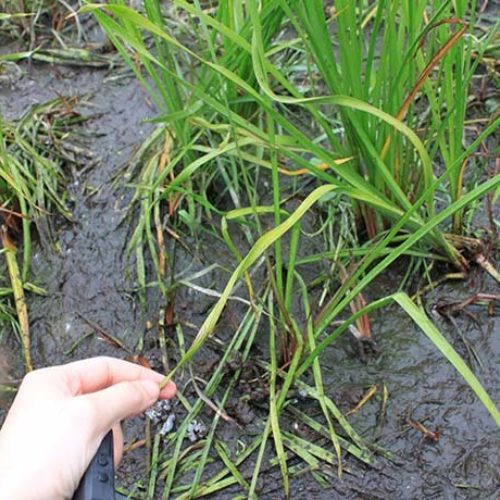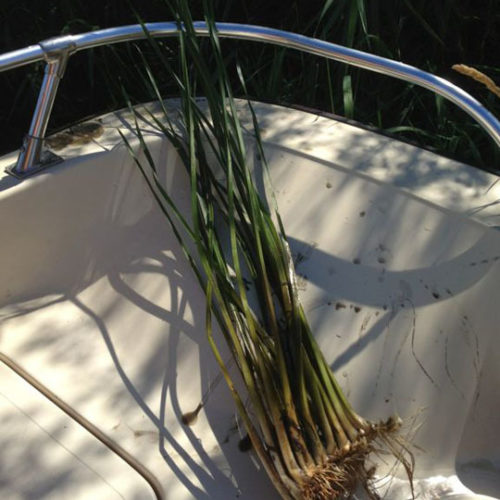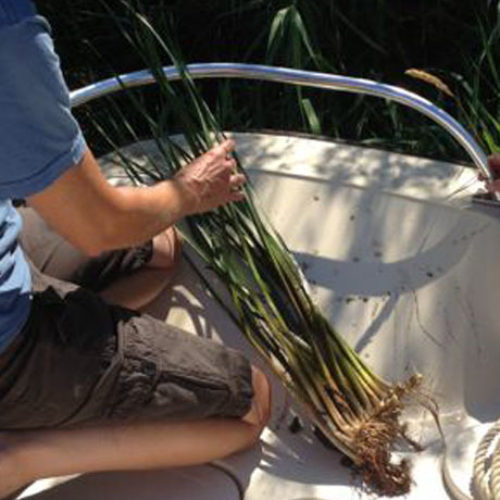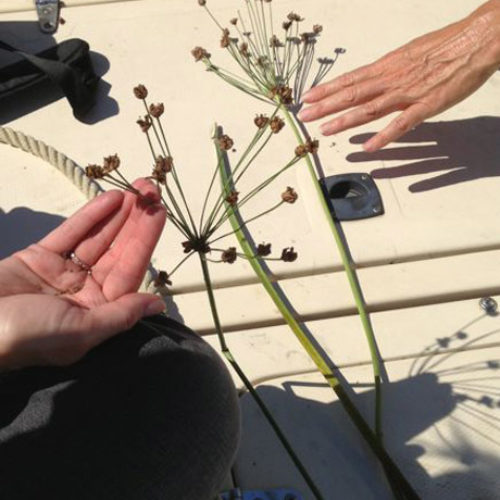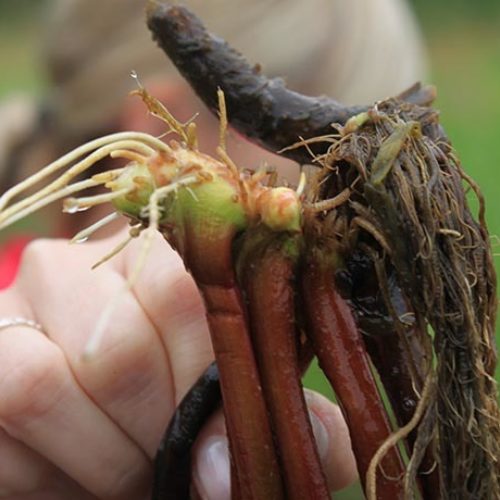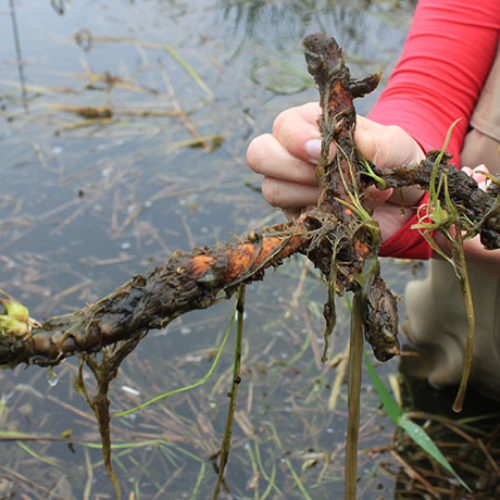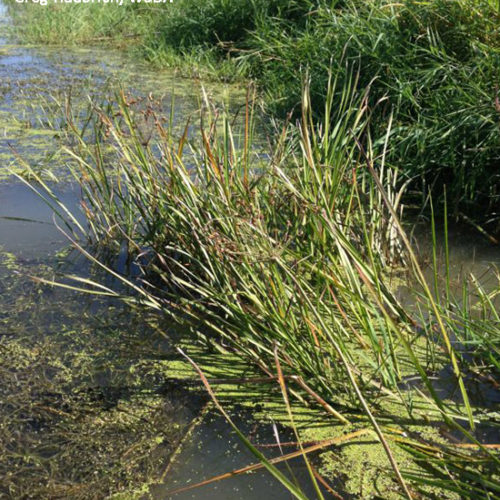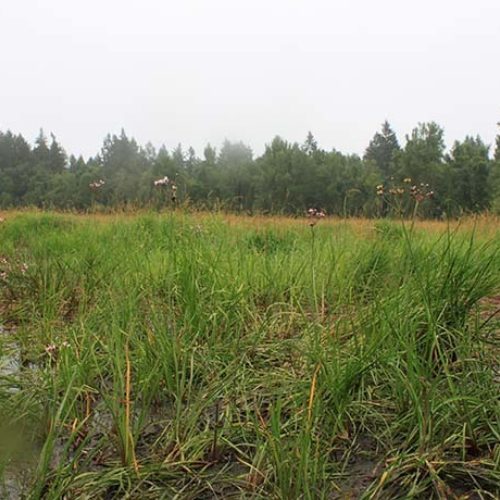Flowering Rush
Butomus umbellatus
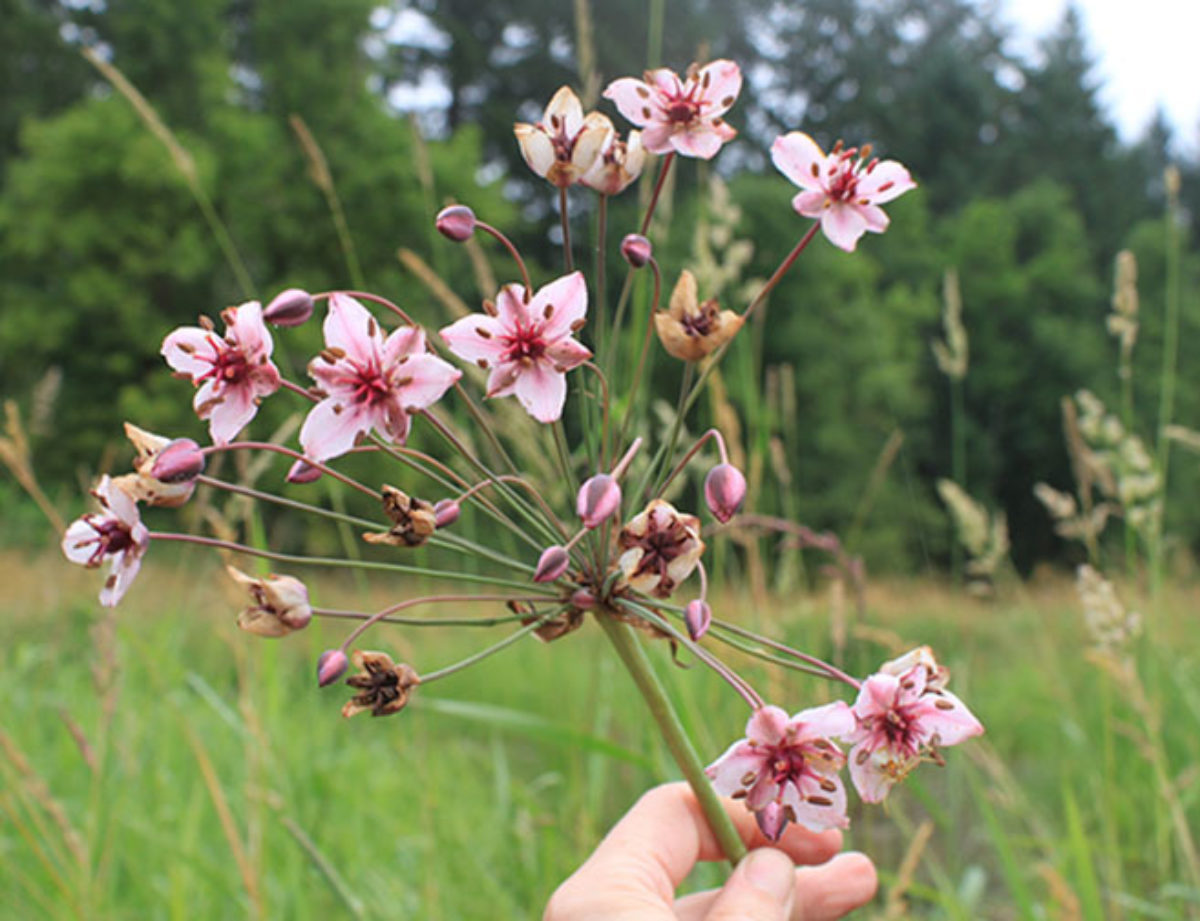
Family: Butomaceae
Other Common Names: grassy-rush, water-gladiolus
Weed class: A
Year Listed: 2009
Native to: Europe, Asia and Northern Africa
Is this Weed Toxic?:
not known to be
Legal listings:
This plant is also on the Washington State quarantine list. It is prohibited to transport, buy, sell, offer for sale, or distribute plants or plant parts of quarantined species into or within the state of Washington or to sell, offer for sale, or distribute seed packets of seed, flower seed blends, or wildflower mixes of quarantined species into or within the state of Washington. Please see WAC 16-752 for more information on the quarantine list. For questions about the quarantine list, contact the Washington State Department of Agriculture's Plant Services Program at (360) 902-1874 or email PlantServices@agr.wa.gov.
Why Is It a Noxious Weed?
Flowering rush is an invasive aquatic plant in the northeast U.S. and has a limited distribution Washington. It is an aggressive colonizer and can spread by seed, bulbils and rhizome fragments. It can be difficult to control and research continues on control options.
How would I identify it?
General Description
Flowering rush is an emergent, aquatic, perennial that grows in a range of fresh water habitats.
Flower Description
Plants have a cylindrical stalk, up to 5 ft tall, ending in a flat-topped flower cluster with individual flower stalks originating from a common point of 20 to 50 light pink flowers. Flowers have three sepals, three petals, nine stamens and pink pistils.
Leaf description
It has a rhizome that produces thin, upright leaves that may be twisted in growth and reach 3 feet or more in length. They can be emergent, submersed or floating. Leaf bases are triangular in cross-section.
Fruit Seed Description
The seeds are very small and are in follicles.
Where does it grow?
It’s considered a wetland obligate and grows in only freshwater habitats. It roots in the mud and grows in shallow waters (to a depth of about 9 feet) in a variety of wetlands, particularly along the shoreline of lakes and slow moving rivers. Please click here to see a county level distribution map of flowering rush in Washington.
How Does it Reproduce?
Flowering rush reproduces both by seed and clonally through the production of numerous vegetative bulbils on both the rhizomes and inflorescences and by small-scale rhizome fragmentation.
How Do I Control It?
Mechanical Control
Digging or suction dredging by hand may be a control option for isolated or individual plants in areas of low density populations. To be successful, the entire rhizome system must be removed without dislodging the rhizome bulbils. Even a slight bottom disturbance can cause the rhizome bulbils to release. Land disposal of plant material is necessary. No plants or sediments can be returned to the water.
Herbicide Control
Herbicide trials are underway in Whatcom County, Washington. Please refer to the PNW Weed Management Handbook, or contact your county noxious weed coordinator.
For More Information
See our Written Findings for more information about flowering rush (Butomus umbellatus).
See our postcard for early detection information about flowering rush
Ecology and Management of Flowering Rush. USDA NRCS Montana
Stevens County NWCB Fact Sheet on flowering rush
Whatcom County NWCB Fact Sheet on flowering rush
Pierce County NWCB Fact Sheet on flowering rush
Flowering Rush Identification Key from Pend Orielle County NWCB



